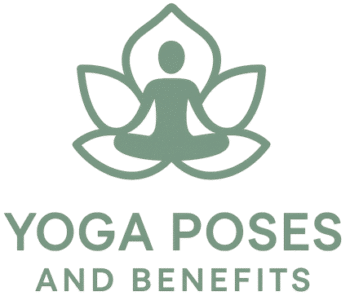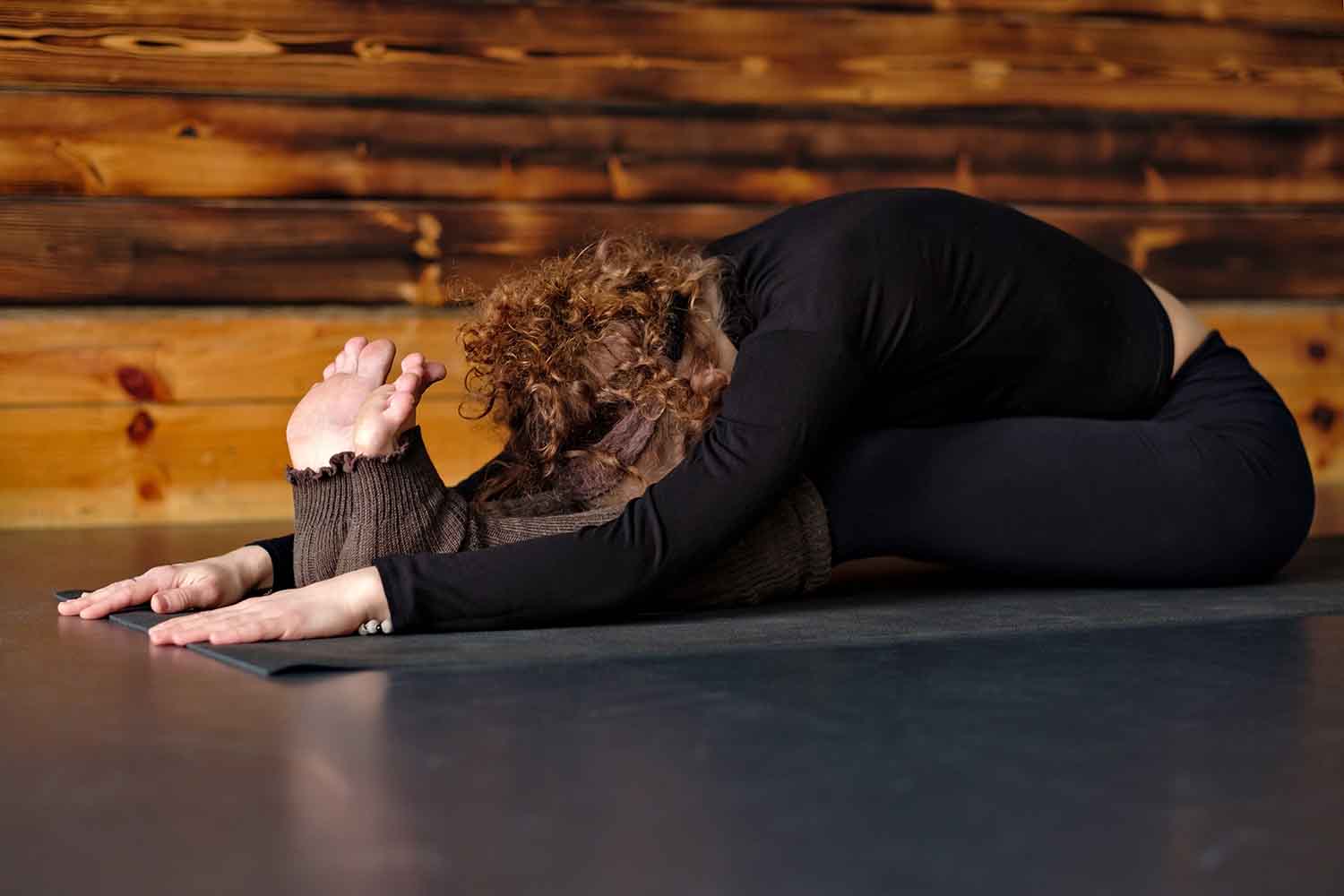Yin Yoga and Its Role in Health
Yin yoga promotes health by targeting the body’s connective tissues, fostering relaxation, and improving overall well-being. Unlike dynamic styles, yin involves long-held, passive poses that stretch deep layers of fascia, ligaments, and joints. This practice enhances flexibility, joint mobility, and tissue hydration, which are essential for physical longevity. Regular yin sessions support spinal health by decompressing the vertebrae and releasing built-up tension.
Breath awareness plays a vital role in yin yoga, calming the nervous system and reducing stress. With focused, deep breathing, the body transitions into a parasympathetic state, which helps alleviate anxiety and promotes recovery. Studies indicate that practices like yin yoga enhance mental clarity and improve emotional regulation, making it a valuable tool for managing stress and anxiety.
Yin yoga also nurtures holistic wellness by aligning physical, mental, and emotional health. Long-held poses, such as Butterfly or Child’s Pose, allow practitioners to connect with their inner selves, fostering mindfulness and introspection. This mindful approach encourages emotional release and cultivates resilience.
Integrating yin yoga into your routine can improve health by addressing both physical and mental challenges. Its restorative nature makes it accessible for practitioners of all levels, offering a path toward sustained wellness and balance.
The Connection Between Yin Yoga and the Body
Yin yoga fosters a profound connection between the body and its deeper layers, enhancing both flexibility and awareness. Unlike dynamic practices that target muscles, yin focuses on connective tissues such as fascia, ligaments, and joints. These long-held, passive poses allow the body to stretch gradually, promoting mobility and reducing stiffness over time.
The sustained stillness in yin yoga stimulates the fascia, improving circulation and hydrating tissues. Poses like Sphinx gently decompress the spine, releasing tension accumulated from daily activities. Meanwhile, Butterfly Pose opens the hips and groin, areas where stress often manifests physically.
Breathwork amplifies the physiological benefits of yin yoga by calming the nervous system and activating the parasympathetic state. With each exhale, the body softens, facilitating deeper relaxation and allowing connective tissues to release tension. This breath-body synergy fosters mindfulness, helping practitioners tune into physical sensations and address areas of discomfort.
Yin yoga also supports joint health by applying gentle stress to these structures, encouraging lubrication and improving resilience. Its meditative nature strengthens the mind-body connection, promoting introspection while enhancing physical well-being. By integrating yin yoga into your practice, you deepen your understanding of how movement, stillness, and breath collectively nurture the body.
Physical Benefits of Yin Yoga
Improved Flexibility and Mobility
Yin yoga significantly enhances flexibility and mobility by targeting deep connective tissues, including fascia, ligaments, and joints. Unlike more active practices, yin emphasizes stillness and long-held poses that gently stretch the body over time. This deliberate approach allows tissues to soften and lengthen, promoting increased range of motion and reducing stiffness.
Key Benefits of yin yoga:
- Lengthens Fascia: Yin poses gradually stretch the fascia, improving its elasticity and reducing restrictions that limit movement.
- Enhances Joint Mobility: Gentle stress applied during poses lubricates joints, supporting smoother movement and reducing discomfort.
- Decompresses the Spine: Poses like Sphinx and Caterpillar alleviate pressure on the spine, promoting better posture and spinal health.
Breathwork complements these physical yin yoga benefits by relaxing the nervous system and encouraging the body to release tension. Each exhale deepens the stretch, allowing connective tissues to adapt without strain. Poses like Butterfly and Dragon target common tension areas, such as the hips and hamstrings, enhancing overall mobility.
Consistent practice fosters lasting improvements. Over time, practitioners experience greater ease in daily movements and other physical activities. Yin yoga provides a low-impact yet highly effective method for nurturing flexibility and supporting long-term joint health. By integrating yin into your routine, you unlock the body’s full potential for mobility and ease.
Joint and Bone Health
Yin yoga promotes joint and bone health by applying gentle stress to connective tissues, encouraging their maintenance and renewal. This low-impact practice stimulates the production of synovial fluid, which lubricates joints and enhances mobility. By holding poses for several minutes, yin yoga fosters gradual tissue adaptation, improving joint resilience and flexibility over time.
Key Physiological Benefits:
- Enhances Joint Lubrication: Long-held poses like Dragon stimulate synovial fluid production, reducing friction and improving joint function.
- Promotes Bone Strength: Mild stress applied to bones during poses encourages bone remodeling, enhancing density and structural integrity.
- Improves Joint Range of Motion: Gentle stretches target connective tissues around joints, reducing stiffness and expanding mobility.
Breathwork plays a critical role in supporting joint health during yin practice. Deep, steady breathing activates the parasympathetic nervous system, allowing the body to relax and tissues to respond more effectively. Poses such as Butterfly and Child’s Pose target common tension areas, like hips and knees, where joint mobility often decreases with age.
With consistent practice, yin yoga helps maintain healthy joints and supports bone longevity. This makes it an ideal complement to both dynamic activities and everyday movements, ensuring the body remains strong and flexible for years to come.
Stress Relief and Relaxation
Yin yoga profoundly relieves stress and promotes relaxation by engaging the parasympathetic nervous system. Through long-held, passive poses and mindful breathing, this practice shifts the body from a state of tension to one of calm. Each pose allows the body to release built-up stress stored in connective tissues, fostering both physical and emotional ease.
Key Benefits for Mental Clarity:
- Calms the Nervous System: Holding poses for 3–5 minutes encourages a parasympathetic response, reducing cortisol levels and alleviating stress through yin yoga poses.
- Relieves Muscle Tension: Poses like Sphinx and Child’s Pose target areas where stress accumulates, such as the back, shoulders, and hips.
- Promotes Deep Relaxation: Gentle stretching combined with slow, rhythmic breathing helps the body fully surrender, enhancing relaxation.
Mindful breathwork complements the physical aspects of yin yoga by helping practitioners stay present and grounded. With each exhale, the body softens further, enabling connective tissues to release tension without strain. Poses like Butterfly and Reclined Twist encourage emotional release while enhancing flexibility.
By integrating yin yoga into your routine, you can cultivate a practice that effectively manages stress while promoting deep relaxation. Over time, this approach not only soothes the body but also nurtures mental and emotional well-being.
Emotional and Mental Health Benefits
Reducing Anxiety and Emotional Tension
Yin yoga significantly reduces anxiety and releases emotional tension by combining mindful stillness with deep stretches. The long-held poses encourage introspection, allowing practitioners to observe and process emotions in a nonjudgmental space. This meditative practice calms the mind and alleviates mental stress, creating a sense of inner peace.
Key Emotional Benefits of Yin Yoga:
- Calms the Mind: Slow, deliberate movements and extended holds quiet mental chatter, fostering clarity and focus.
- Releases Emotional Tension: Poses like Butterfly and Reclined Twist target areas such as the hips and lower back, where stress and emotions are often stored.
- Encourages Mindfulness: Focused breathing during each pose anchors the mind in the present moment, helping reduce anxious thoughts.
The integration of breathwork enhances yin yoga’s ability to ease anxiety. Deep inhalations provide energy, while long, steady exhalations signal the nervous system to relax. This creates an environment where emotional tension can dissipate naturally.
By allowing space for stillness and self-awareness, yin yoga offers a safe practice for addressing anxiety and cultivating emotional resilience. Regular sessions help build mental strength, improve focus, and restore balance, making it a powerful tool for supporting emotional and mental health over time.
Promoting Stress Management Through Yin Practice
Yin yoga promotes effective stress management by combining gentle movement, mindful stillness, and intentional breathwork. This practice creates a sanctuary for the body and mind to release accumulated tension while cultivating resilience against future stressors. By focusing on long-held poses, yin yoga encourages self-awareness and emotional balance.
Key Benefits of Stress Management with Yin:
- Activates the Parasympathetic Nervous System: Extended holds and slow breathing shift the body into a state of relaxation, reducing cortisol levels and promoting calmness.
- Enhances Emotional Regulation: Poses like Butterfly and Reclined Twist help release physical stress stored in connective tissues, encouraging emotional release and stability.
- Builds Resilience: Facing discomfort in poses teaches practitioners how to remain present, even during challenging moments, fostering mental strength.
Mindful breathwork enhances yin practice by deepening relaxation and improving focus. Inhalations energize the body, while prolonged exhalations signal the nervous system to calm. This synergy between movement and breath creates a grounding effect, essential for managing stress effectively.
Consistent yin practice equips practitioners with tools to approach life’s challenges with clarity and composure. Over time, this routine not only relieves stress but also fosters long-term emotional resilience and mental well-being, providing a holistic approach to stress management.
Does yin yoga count as exercise?
Yes, yin yoga counts as a form of exercise, specifically a low-intensity, restorative practice focused on flexibility and joint health. It targets connective tissues like fascia, improves circulation, and supports relaxation of the parasympathetic nervous system. While not cardiovascular, its physiological benefits complement more dynamic activities.
How does yin yoga benefit the body?
Yin yoga benefits the body by improving joint mobility, enhancing flexibility, and stimulating the parasympathetic nervous system. Holding poses for extended periods targets deep connective tissues like fascia, aiding circulation and reducing stress. It complements practices like mindfulness and myofascial release, supporting overall physical and mental well-being.
Is yin yoga scientifically proven?
Yin yoga is supported by emerging scientific studies suggesting it can enhance flexibility, reduce stress, and improve joint mobility. Research indicates physiological benefits such as increased parasympathetic activity, reduced cortisol levels, and improved connective tissue health, aligning with practices like mindfulness, fascia release, and vagal tone regulation.
Does yin yoga reduce cortisol?
Yes, yin yoga can help reduce cortisol levels by activating the parasympathetic nervous system and promoting deep relaxation. This gentle, slow-paced practice emphasizes long-held poses and mindful breathing, which support stress reduction, hormone regulation, and overall physiological balance—key benefits often linked to yin yoga and its calming effects.
Can you get toned from yin yoga?
You can experience mild toning from yin yoga, but it is not typically considered a primary method for building muscle definition. Yin yoga focuses on deep tissue release, flexibility, and joint mobility rather than dynamic movements that build muscle mass, like vinyasa yoga or resistance training.
Why does yin yoga feel so good?
Yin yoga feels so good because it targets deep connective tissues like fascia, promoting flexibility and increased circulation. Holding poses for extended periods activates the parasympathetic nervous system, reducing stress and cortisol levels. This gentle practice enhances joint mobility and complements dynamic styles like Vinyasa or Hatha yoga.

